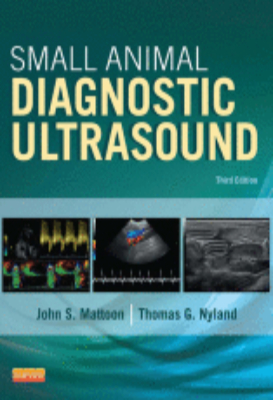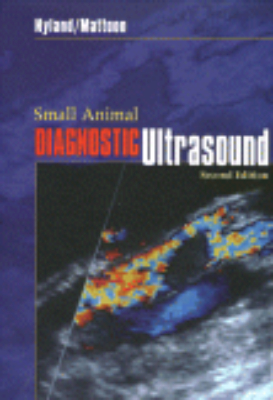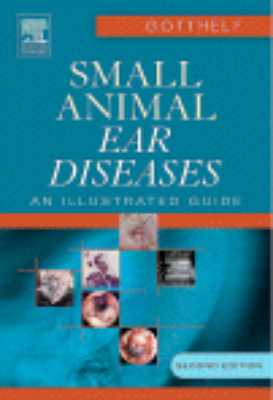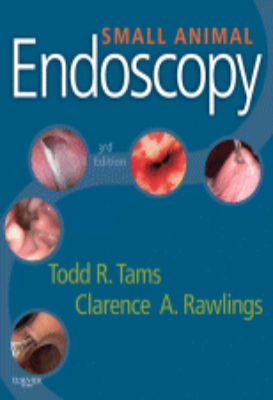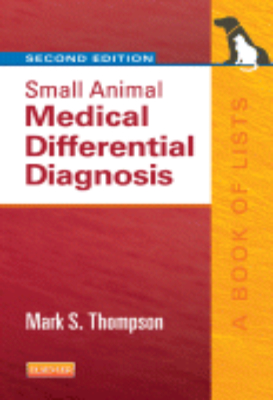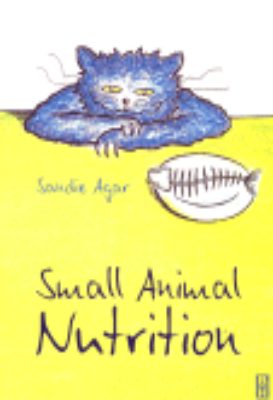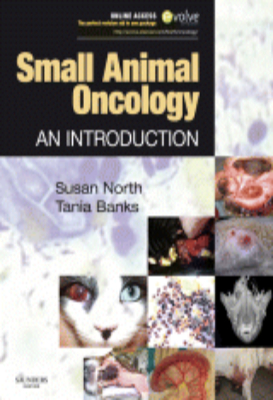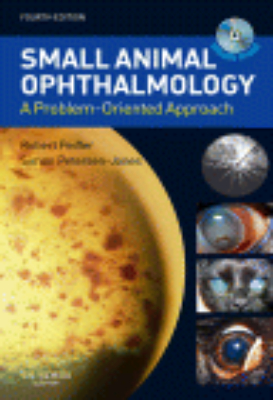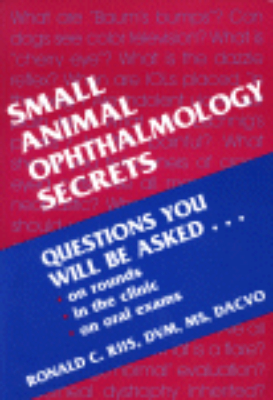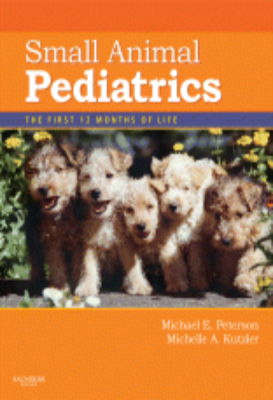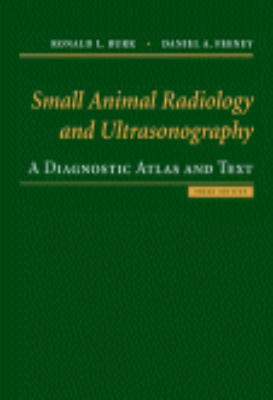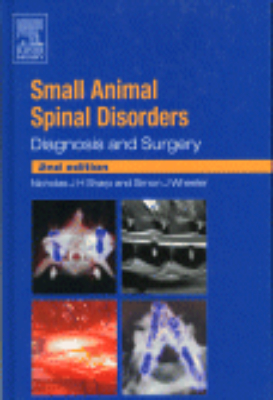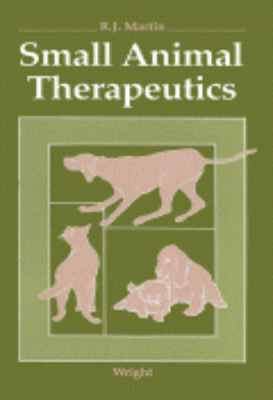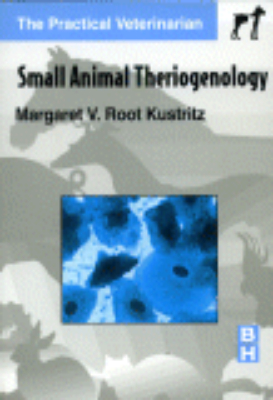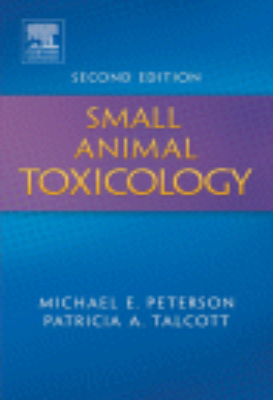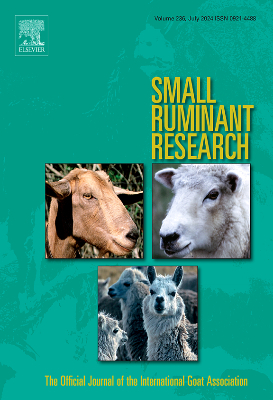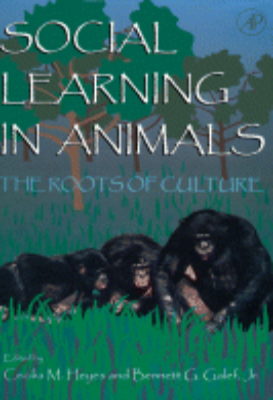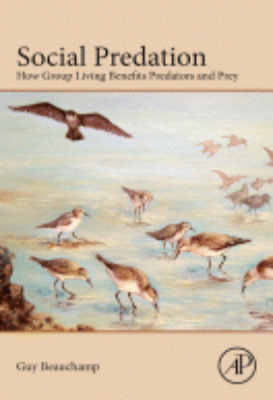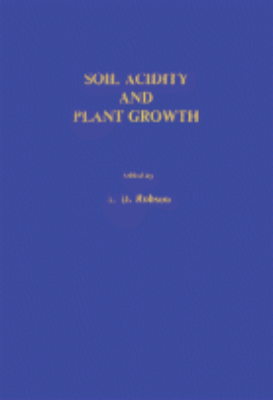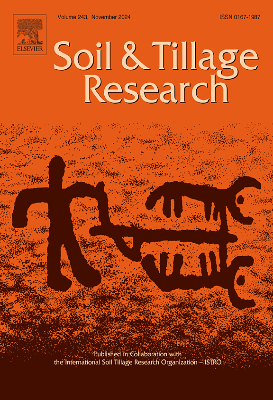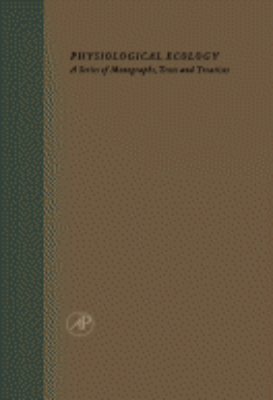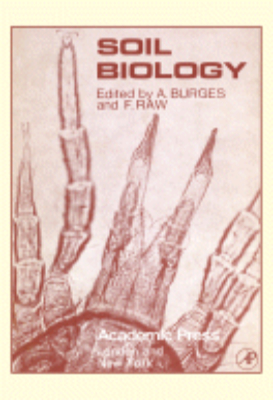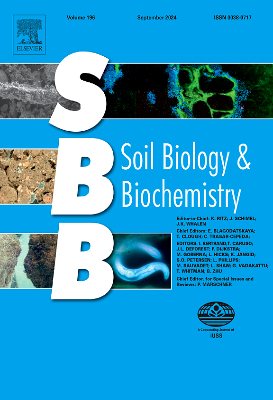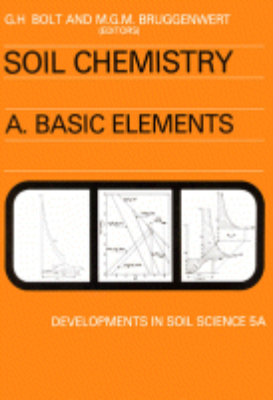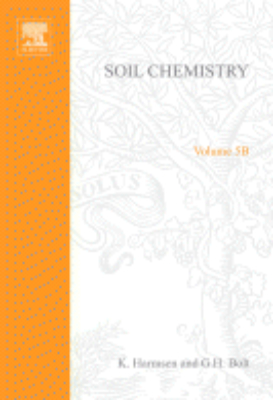E-Resources
Small Animal Diagnostic Ultrasound; 2015
“Now in full-color with over 750 vivid images located near their text descriptions, Small Animal Diagnostic Ultrasound, 3rd Edition is the must-have resource for coverage of the basic principles of ultrasonography in small animal medical care. Using a logical body-systems approach, where chapters are organized from “”head to tail,”” this third edition offers completely revised and up-to-date information regarding the latest techniques, applications, and developments in ultrasonography including expanded coverage of Doppler imaging principles and new gross anatomic and pathological specimen images. Also new to this edition are 100 video clips (housed on a companion website) that demonstrate normal and abnormal conditions as they appear in ultrasound scans. “”This is the book that any clinician that has interest in veterinary diagnostic imaging should have.”” Reviewed by Denis Novak on behalf of European Journal of Companion Animal Practice, June 2015 “”There will be very few clinicians who will fail to learn something new within a few minutes of opening it.”” Reviewed by Louise McLean on behalf of Veterinary Record, July 2015 Video clips accessible on the accompanying website allows the ultrasonographer to visualise organs in motion. The real stuff!”” Reviewed by Fabienne Dethioux on behalf of Royal Canin: Vets Today, July 2015 . Key Features. Head-to-tail chapter organization makes finding specific information quick and easy.. The most up-to-date ultrasound imaging techniques ensure you stay on top of the industry.. Online glossary contains over 400 terms offer a more complete understanding of ultrasonography.. NEW! Color Design includes over 750 images appearing near their text mentions.. NEW! Approximately 100 video clips located on the companion website demonstrate conditions as they appear to an ultrasonographer.. NEW! Updated and expanded coverage of Doppler imaging principles and applications, including non-cardiac organs and abdominal vasculature, keep you up to date in this critical area.. NEW! Gross anatomic and pathological specimen images accompany the ultrasound images to help orient you to the tissues under study.”
Small Animal Diagnostic Ultrasound: Second Edition 2002
This book provides the basic physical principles of ultrasound, plus imaging artifacts and the use of ultrasonography by body system. Ultrasound is used extensively to diagnose pregnancy and it provides both normal and abnormal scans. The second edition is completely revised and updated, bringing forth current developments in this area. The purpose is to serve as a general source for students and form the basis of a more complete comprehensive reference for practitioners and trainees.
Small Animal Ear Diseases
“The second edition of this reference features more than 300 high-quality color illustrations to assist practicing veterinarians and veterinary students in identifying small animal ear diseases. It begins with a review of the science involved in diagnosing and treating ear disease, including the anatomy of the ear, examination techniques, and pathophysiology. Coverage also includes discussions of specific ear disease conditions, based on the standard ear disease classification scheme of predisposing factors, primary causes, and perpetuating factors. The consistent presentation of each disorder includes an introduction, color illustrations of the condition, description of diagnostic techniques, treatment options, suggested readings, and updated references. Key Features. More than 300 high-quality images illustrate a variety of ear conditions to assist practitioners in practical diagnosis.. A comprehensive chapter on marketing ear care and otitis therapy includes strategies for successfully integrating these services into practice to offer expanded patient services and increase profits.. A chapter on diagnostic imaging provides the latest information on using imaging to diagnose small animal ear disease.. An Ear Product Formulary in the appendix serves as a complete guide to products available for treating small animal ear diseases.. 6 new chapters covering:. The microbiology of the ear of the dog and cat. Laser ear surgery. Cytology of the ear in health and disease. Adverse food reactions. Diseases that affect the pinna. Otitis interna and vestibular disease. Expanded coverage of otic cytology and a photographic manual of ear cytology. In-depth discussions of video otoscopic diagnostics. New photos of interesting cases contributed by practitioners”
Small Animal Endoscopy
“The latest edition of the critically acclaimed Small Animal Endoscopy presents informative, practical, and up-to-date guidance on endoscopic indications, instrumentation, patient preparation, and techniques. Todd R. Tams and Clarence A. Rawlings, the foremost experts in veterinary endoscopy, provide the novice as well as the advanced practitioner with the information needed to deliver the safest, high-quality endoscopic services for small animals, including avian and exotics. Chapters are organized consistently and lavishly illustrated to help you easily find and understand key concepts and procedures. This edition includes a companion website with expert demonstrations of techniques. Key Features. Enables you to deliver the safest, high quality care and a wider range of services to the pets of increasingly concerned and savvy owners.. Features cutting-edge information on minimally invasive procedures to improve diagnostic accuracy, reduce operating time, improve success, minimize post-operative stress and pain, and promote faster healing.. Helps you recognize the many indications for endoscopy in everyday practice.. Covers a vast range of topics in a clear, concise and readable style.. Describes instrumentation, examination, and sample procurement techniques in detail.. Shows both normal and abnormal findings you may encounter during a procedure in an atlas of images in relevant chapters.. Provides minimally invasive examination and surgical options for veterinarians treating uniquely sensitive avian and exotic patients.. Provides step-by-step instructions on specific techniques.. Helps beginners master endoscopic diagnosis and treatment and more experienced endoscopists utilize their endoscopic equipment to its fullest capacity.. Expanded content on the use of rigid endoscopy helps you perform the most current minimally invasive surgical procedures.. A new coeditor, Dr. Clarence Rawlings, shares his expertise in rigid endoscopy for diagnostic and surgical procedures and his extensive knowledge of endosurgery.. Consistent chapter organization includes sections on indications, instrumentation, patient preparation, and restraint, in addition to details of the procedures themselves.. Over 1,000 color images depict normal and abnormal anatomical features, as well as numerous tables and diagrammatic representations.. Required or recommended instrumentation. Instructions on how to care for, clean, and store endoscopic instruments. Pre-endoscopic procedures, including patient preparation, equipment set-up, and positioning of personnel. Instructions on how to correctly hold and manipulate both flexible and rigid endoscopes. Post-endoscopic procedures, including patient recovery and proper submission of tissue samples. Information on how to incorporate flexible and rigid endoscopy into a veterinary practice using specific marketing skills and appropriate personnel training. A bonus website takes understanding to the next level with videos of: –
Small Animal Medical Differential Diagnosis
“Small Animal Medical Differential Diagnosis, 2nd Edition is a practical, concise guide to the differential diagnosis, etiology, laboratory abnormalities, and classification of clinical signs and medical disorders in dogs and cats. By covering nearly every possible sign and clinical disorder relevant to small animal medical practice, this pocket-sized, rapid reference helps you make more reliable on-the-scene decisions. Key Features. More than 400 lists bring the most important medical diagnostic information from multiple resources into a single rapid reference.. An organized presentation of differential diagnoses by sign and symptom, disorder, and body system, facilitates quick and flexible access to information at many stages of the diagnostic work-up.. Alphabetical listing of all relevant laboratory tests makes information easy to find for students and experienced practitioners alike.. Easily identify the likeliest diagnosis by reviewing the possibilities listed in order of incidence.. Pocket-sized for portability, practicality, and quick reference.. NEW! Coverage of new disorders and syndromes expands the span of differential diagnoses to help you effectively evaluate more signs and symptoms.. NEW! Addition of new and more widely used diagnostic and laboratory tests keeps you up-to-date as lab tests become more specialized and sophisticated.”
Small Animal Nutrition
Small Animal Nutrition is an essential new text relating the theory of digestion and nutrition to practical application in everyday veterinary practice. The basic principles of nutrition are explained, with special attention given to the use of nutrition as a tool in the management of the patient. The student is informed of different nutritional requirements in both sickness and health, and concepts are presents in a light-hearted and easily understood format. Key facts are highlighted and a series of self-assessment questions and answers are provided at the end of each chapter.This new text explains nutrition in everyday language, and should be an essential purchase for all veterinary students, veterinary nurses and veterinary practices.
Small Animal Oncology
“A highly practical guide suitable for in-clinic reference, Small Animal Oncology has been designed for maximum ease of use and accessibility of information. Whilst giving clear and up-to-date briefing for the busy practitioner, it also is a valuable resource to the student with a special interest in oncology.This Introduction gives an overview of cancer biology and explains the principles of available therapies. There is up to date discussion on new and developing techniques and treatments, and guidance on when these are indicated. The book covers all common, most less common and some rare aspects of small animal oncology. Key Features. accompanying Evolve website includes over 20 clinical cases to try your knowledge. all-round practical, useful, every day essential guide to small animal oncology. schematic approach gives quick access to information when you need it. explains biology and the basic principles as well as indicating treatment options”
Small Animal Ophthalmology
“This new edition retains the successful problem-oriented approach and full color text of the previous edition, along with wide coverage of all aspects of small animal ophthalmology and more than 150 color illustrations. In addition the new edition offers much more, including an instructional CD-Rom of 40 clinical cases comprising video clips and questions, to further improve the reader’s skills in reaching an accurate diagnosis and selecting the best treatment option. All chapters have been fully revised and updated to take into account latest developments. Key Features. Over 150 full-color illustrations on all common ophthalmic conditions. Problem-oriented approach engages the reader and promotes learning. Concise basic science chapter to set the background to the clinical conditions. Comprehensive clinical examination and diagnosis chapter. International ophthalmic formulary appendix for quick reference to drug doses and formulations. Aimed at veterinary students and general practitioners. Comes with CD-Rom packed with 40 clinical cases to help readers apply what they have learned. New illustrations cover key clinical conditions and surgical procedures. Includes new material throughout on exotics. New contributors brought in to keep the text fully up to date”
Small Animal Ophthalmology Secrets
“Written in the popular question-and-answer format of The Secrets Series, this handy resource provides an in-depth overview of the latest diagnostic and therapeutic approaches to small animal ophthalmology. Coverage includes such important areas as the Cornea, Glaucoma, Cataracts, Neuro-Ophthalmology, Oculoplasties, Uveitis, the Retina, and Neoplasms Key Features. Includes helpful answers, tips, and secrets of contributing authors; all working in the field of veterinary ophthalmology. An increasingly important topic due to the emergence of effective therapies. Riis and the contributors are a virtual “”who’s who”” in veterinary ophthalmology”
Small Animal Pediatrics
A practical reference for the general veterinary clinician,Small Animal Pediatrics: The First 12 Months of Lifecompiles into a single location the latest information in the rapidly developing field of canine and feline pediatrics. Editors Michael Peterson, DVM, MS, and Michelle Kutzler, DVM, PhD, DACT are joined by more than 40 expert contributors in providing coverage from prenatal care to one year of age. For ease of use, the text is divided into four sections. AGeneral Considerationssection opens the book by covering prenatal care of the bitch and queen, birth, normal physical examinations, growth, husbandry, nutrition, care of orphans, neonatal mortality, behavior, emergency and critical care, and immunology. The second section,Common Infectious Diseases, covers bacterial, viral, fungal, rickettsial, and parasitic infections. The third section describes diagnostic and therapeutic approaches to the young patient including radiology, ultrasound, aesthetic and surgical considerations, pain management, pharmacology, and clinical pathology. Finally, the fourth section covers a variety of organ systems with discussions on normal development, congenital conditions, and acquired diseases. The text also includes information that is usually difficult to find, including a pediatric formulary, care of orphan puppies, clinical pathology values, prenatal care, and normal growth and development guidelines. This book will be a significant asset to any veterinary library!
Small Animal Radiology and Ultrasonography
“This one-of-a-kind text atlas is a must-have for veterinarians and veterinary radiologists. A wealth of superb illustrations demonstrate the correlation between radiographic and ultrasound images. As diagnostic radiology and ultrasound imaging continue to play a vital role in the practice of small animal medicine, it’s crucial that practitioners stay abreast of the very latest technology with a tool such as Small Animal Radiology and Ultrasonography, 3rd Edition. Key Features. Broadened coverage including spectral doppler echocardiographic studies to ensure users are up-to-date with the latest information.. Reference lists have been expanded to include more comprehensive information on particular subjects.. All areas of discussion are better illustrated to further enhance coverage of topics.. Broadened coverage including spectral doppler echocardiographic studies to ensure users are up-to-date with the latest information.. Reference lists have been expanded to include more comprehensive information on particular subjects.. All areas of discussion are better illustrated to further enhance coverage of topics.”
Small Animal Spinal Disorders
“The new edition of this highly illustrated volume on small animal spinal disorders contains much more text than the previous edition, and has been re-organised into an illustrated text. All possible spinal disorders are covered – from trauma and disc disease to neoplasia and much more. Introductory chapters on relevant functional anatomy and clinical examination are followed by chapters on diagnosis, differential diagnosis and pre-operative assessment (including diagnostic aids and instrumentation). Each spinal disorder is then reviewed, giving operative techniques where necessary to enhance the detailed text. A discussion of post-operative management, possible complications and outcome is also included.Encompassing all aspects of spinal disorders, from the presenting features of each spinal disorder to the outcomes after surgery or other treatment, and packed full of colour and black-and-white illustrations, Small Animal Spinal Disorders will give you all the information you need to diagnose and treat these complicated disorders. Key Features. This edition moves from an atlas-style presentation to that of a fully illustrated text.. Lengthy figure legends have been replaced with shorter, easier-to-digest figure legends.. 50 new color prints and line figures enhance coverage on new spine surgery techniques.. A description-rich presentation of surgical procedures, outcomes, and complications makes this edition a vital resource for every clinical practice.. This edition moves from an atlas-style presentation to that of a fully illustrated text.. Lengthy figure legends have been replaced with shorter, easier-to-digest figure legends.. 50 new color prints and line figures enhance coverage on new spine surgery techniques.. A description-rich presentation of surgical procedures, outcomes, and complications makes this edition a vital resource for every clinical practice.”
Small Animal Surgery Secrets
“Focused and concise, yet comprehensive in scope, this completely revised and updated reference provides essential, practical information in the highly popular question-and-answer format of the Secrets Series. In over 100 chapters, the authors ask and answer a series of key questions that routinely confront the veterinarian on the front lines of small animal care. Major sections include General Concepts, Soft Tissue Surgery, Orthopedic Surgery, Neurosurgery, Oncologic Surgery, and Dental Surgery. Key Features. Concise answers with valuable pearls, tips, memory aids, and “”secrets””. 105 succinct chapters in surgery by nationally recognized experts. Bulleted lists and tables for quick review. Thorough, highly detailed index”
Small Animal Therapeutics
Small Animal Therapeutics presents the principles of pharmacokinetics as it relates to small animal treatment. It discusses the parameters used to gauge the duration of action of individual drugs. It addresses the factors affecting therapeutic response. Some of the topics covered in the book are the properties of antibacterial drugs; factors which affects the selection of an antibacterial agent; treatment of specific bacterial infections; glucocorticoid secretion; complication of chronic glucocorticoids administration; animal vaccination; inactivated vaccines; and deleterious effects of vaccination. The physical basis of pain is covered. The mechanisms of analgesics are discussed. The text describes the different type of tranquillizers, sedatives, and anesthetics. A study of the effects of local and general anaesthetics is presented. A chapter is devoted to the phases of epilepsy and treatment. Another section focuses on the identification of epileptic attacks and treatment of rare internal parasitic infestations. The book can provide useful information to veterinarians, doctors, students, and researchers.
Small Animal Theriogenology
“Written in a user-friendly format, this handbook provides students and practitioners with the essential information on small animal reproduction. Veterinarinas will be able to find quickly the information they need to successfully diagnose and treat disorders of the reproductive system, assist in difficult deliveries, and answer clients’ questions on contraception, spaying and neutering, infertility, and artificial insemination. Key Features. Easy-to-use, pocket sized format keeps key facts within reach in any setting.. Outline format makes finding information quick and easy.. The ONLY book written on small animal theriogenology for small animal veterinarians designed for quick reference.. All content is current and the authors are Diplomates of the American College of Theriogenologists to ensure the most authoritative information, including discussions of regional or national differences in techniques and medications.. Coverage of veterinary neonatology presents pediatric content on examining, treating, and feeding neonates that is often overlooked by other texts on the subject.. Topics include breeding management, pregnancy diagnosis and care, pregnancy termination, artificial insemination and preparation of chilled and frozen semen, emerging technologies in veterinary reproduction, and diseases of the reproductive tract including vaginitis, prostate disease, and pyometra.. Includes a chapter on infertility, an area of growing concern for pet owners and breeders.”
Small Animal Toxicology: Second Edition 2006
“This revised and expanded reference is a valuable aid for the practicing veterinary clinician in diagnosing and determining treatment for toxic exposures in small animals, and for veterinary students as a supplement to their classroom instruction. It contains chapters addressing nontraditional areas of toxicology not covered in conventional toxicology texts. It also covers areas of toxicology which seem basic but are rarely discussed, such as taking a toxicological history, establishing a minimum database, providing supportive care, and managing emergency treatment of the poisoned patient. The book is organized into three sections, including 20 new chapters and new topics such as grapes and raisins, lilies, “”Christmas time”” plants, mercury, and accidental poisoning in non-traditional pets. Key Features. New two-color design makes the book more esthetically pleasing and allows for quick retrieval of information. Toxic Plant Information Summary tables make treatments for plant intoxications easy to find. Toxic Plant Quick Reference Based on Clinical Signs tables are included, to support small-animal veterinarians in cases of potential toxic plant ingestion. Summary charts at the beginning of each chapter in the Specific Toxicants section contain bulleted lists with clear-cut information on the specific toxicant, the clinical signs, and prognosis. A comprehensive review of all known potentially toxic substances is provided, from A (acetaminophen) to Z (zinc), including the very latest on grape and raisin toxicity making this the most up-to-date and thorough text in this field. 45 different experts contribute to this book, all from the field of veterinary toxicology and medicine. 20 new chapters have been added. New topics include a list of toxicants affecting body systems, management of toxins in pregnancy, diagnostic toxicology, bacterial toxins, and cosmetic/toilet articles. Snake-bite injuries are treated in two separate, expanded chapters: Pit Vipers and Coral Snakes. Section on pharmaceuticals includes bromides, anticonvulsants, tricycle antidepressants, monoamine oxidize inhibitors, B-adrenergic toxicities, and vitamins A and D. Additional specific toxicants are covered, including Amitraz, hydramethylon, ethanol, mercury, toad toxins, poisonous frogs, salamanders, newts and venomous arthropods”
Small Animal Toxicology: Third Edition 2013
“Diagnose and determine treatment for toxic exposures in small animals with this quick reference! Small Animal Toxicology, 3rd Edition covers hundreds of potentially toxic substances, providing the information you need to manage emergency treatment and prevent poisonings in companion animals. To help you identify an unknown poison, this guide provides a list of potential toxins based on clinical signs or symptoms. It also includes a NEW color insert with 85 full-color photographs of toxic plants and of lesions associated with various poisonings. Written by respected veterinarian Michael E. Peterson and board-certified veterinary toxicologist Patricia A. Talcott, along with a team of expert contributors, this edition covers a wide variety of topics including toxicodynamics, toxicokinetics, effective history taking, recognizing clinical signs of toxic exposures, managing emergencies, and supportive care of the poisoned patient. Key Features. Comprehensive coverage of toxins/poisons includes the full range of substances from acetaminophen to zinc, including home products, prescription medicines, recreational drugs, and more.. Guidelines to evaluation, diagnosis and treatment include examinations of the source, toxic dose, toxicokinetics, clinical signs, minimum database, confirming tests, treatment progress and differential diagnosis for each specific toxicant.. Coverage of common poisonous substances includes grapes and raisins, nicotine, mercury, mushrooms, Christmas-time plants, and snake and spider venoms.. Toxicological Concepts section provides information on toxicologic principles such as history taking, providing supportive care, and managing emergency treatment.. General Exposures section addresses nontraditional toxicology such as indoor environmental air, pesticides, pharmaceuticals, and toxicities in pregnant and lactating animals.. Miscellaneous Toxicant Groups section covers commonly encountered specific toxicants, the proper use of diagnostic laboratories, use of human poison control centers, and antidotes for specific toxins.. More than 50 international contributors provide up-to-date, authoritative advice on treating poisonings and intoxications.. 8 NEW chapters cover topics including legal considerations in toxicology cases, responding to mass exposures, and poisonings in birds, small mammals, and geriatric patients.. NEW color insert shows 85 of the most commonly encountered toxic substances for at-a-glance identification.. UPDATED Signs and Symptoms index makes it easier to find information on a toxic agent by presenting signs rather than requiring the formulation of a diagnosis.. UPDATED information on agents most likely to cause a toxic reaction includes natural flea products and an expanded section on human medications.. NEW quick-access format with bold headings and convenient tables and boxes allows quick retrieval of information in emergency situations.”
Social Learning in Animals
“The increasing realization among behaviorists and psychologists is that many animals learn by observation as members of social systems. Such settings contribute to the formation of culture. This book combines the knowledge of two groups of scientists with different backgrounds to establish a working consensus for future research. The book is divided into two major sections, with contributions by a well-known, international, and interdisciplinary team which integrates these growing areas of inquiry. Key Features. Integrates the broad range of scientific approaches being used in the studies of social learning and imitation, and society and culture. Provides an introduction to this field of study as well as a starting point for the more experienced researcher. Chapters are succinct reviews of innovative discoveries and progress made during the past decade. Includes statements of varied theoretical perspectives on controversial topics. Authoritative contributions by an international team of leading researchers”
Social Predation
“The classic literature on predation dealt almost exclusively with solitary predators and their prey. Going back to Lotka-Volterra and optimal foraging theory, the theory about predation, including predator-prey population dynamics, was developed for solitary species. Various consequences of sociality for predators have been considered only recently. Similarly, while it was long recognized that prey species can benefit from living in groups, research on the adaptive value of sociality for prey species mostly emerged in the 1970s. The main theme of this book is the various ways that predators and prey may benefit from living in groups. The first part focusses on predators and explores how group membership influences predation success rate, from searching to subduing prey. The second part focusses on how prey in groups can detect and escape predators. The final section explores group size and composition and how individuals respond over evolutionary times to the challenges posed by chasing or being chased by animals in groups. This book will help the reader understand current issues in social predation theory and provide a synthesis of the literature across a broad range of animal taxa. Key Features. Includes the whole taxonomical range rather than limiting it to a select few. Features in-depth analysis that allows a better understanding of many subtleties surrounding the issues related to social predation. Presents both models and empirical results while covering the extensive predator and prey literature. Contains extensive illustrations and separate boxes that cover more technical features, i.e., to present models and review results”
Soil Acidity and Plant Growth
Soil Acidity and Plant Growth emerged from concerns over increasing acidification of soils under improved pastures over wide areas of southern Australia. While the book has its origin in the problems of acidification of Australian soils under pastures, the authors examine soil acidity within a much broader framework, making their views relevant to all agricultural and natural ecosystems on acid soils. The book’s first two chapters discuss the chemistry of soil acidity and the ecological processes leading to it. This is followed by separate chapters on biological responses to soil acidity, covering mineralization of soil nitrogen, incidence of plant diseases, plant mycorrhizal associations, symbiotic nitrogen fixation in legumes, and genetic variability in plant response to toxicities. The remaining chapters focus on the correction of soil acidity problems by liming. These include studies on the rates of application and effectiveness of liming materials; and the development and use of computer modelling procedures to help researchers identify the effects and interactions of soil pH on component processes and to provide assistance to farmers in the management of long-term subterranean clover pastures.
Soil and Water
Soil and Water: Physical Principles and Processes describes the physical principles governing the soil-water system and particularly the sequence of processes constituting the cycle of water in the field. Organized into two parts, with a total of 11 chapters, this book first discusses the basic physical properties of both soil and water. Some chapters deal with the state of water in soil and flow of water in saturated and unsaturated soil. The second part focuses on the aspects of field water cycle, starting from the entry of water into soil to the redistribution of soil moisture. It also describes the groundwater drainage, evaporation from bare-surface soils, uptake of soil water by plants, and the water and energy balance in the field. This work is meant for students and professional workers in soil physics and other related disciplines who need or might be interested in a fundamental and up-to-date exposition of soil physics.
Soil Biology
Soil Biology brings together the microbiological, botanical, and zoological aspects of soil biology. Leading specialists provide critical reviews and assessments of their particular branches of soil biology, paying particular attention to functional aspects and biotic interrelationships whenever possible. This volume is organized into 17 chapters and begins with an overview of the soil system, emphasizing the system components including the mineral fraction, organic matter, soil moisture, and soil atmosphere. The next chapters focus on microorganisms present in the soil, along with their effects on plant roots. The book also discusses the soil algae, including how algae are affected by physical and chemical environments and their interrelations with other organisms. The remaining chapters look at other organisms that inhabit the soil, including Arthropoda, Collembola, and Mollusca, as well as the probable effects of inhibiting substances upon the biology of soil microorganisms. The final chapters explain the decomposition of organic matter in the soil and the effects of synthetic chemicals on soil microorganisms. This book is a valuable resource for soil biologists and research workers in fields such as botany, agriculture, zoology, and microbiology.

